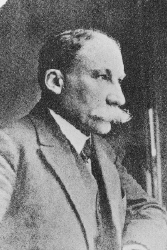Halogenoalkanes CnH2n+1X, X = Cl, Br or I.
Links
Halogenoalkane "
alcohol
Reagents: aqueous sodium hydroxide (usually
with a little ethanol added to aid solution).
Conditions: boil under reflux.
CH3CH2Br + NaOH "CH3CH2OH + NaBr
Halogenoalkane " alkene
Reagents: sodium or potassium hydroxide
dissolved in ethanol
Conditions: boil under reflux
If several alkenes are possible, the major product is that where the C=C group carries the greatest number of substituents:
CH3CH(Cl)CH2CH3 + KOH " CH3CH=CHCH3 + KCl + H2O
Alkanes
& alkenes
Arenes
Halogenoalkanes
Alcohols
Aldehydes and
ketones
Carboxylic acids
Acyl chlorides
Amines
Nitro compounds
Nitriles
Amides
Halogenoalkane " nitrile
Reagents: potassium cyanide dissolved in
aqueous ethanol.
Conditions: heat under reflux.
CH3CH2Br + KCN " CH3CH2CN + KBr
The reaction does not work with tertiary halogenoalkanes such as (CH3)3CBr; in this case elimination occurs instead to give an alkene.
Halogenoalkane " amine
Reagents: ammonia (in excess) in ethanolic solution.
Conditions: heat in a sealed tube.
Mixtures of amines are formed:
CH3CH2Br + 2NH3 " CH3CH2NH2 + NH4Br
CH3CH2Br + CH3CH2NH2 " CH3CH2N+HCH2CH3 + Br -
And so on to give (CH3CH2)4N+Br-. Use of excess ammonia reduces the proportion of further substitution. Only primary halogenoalkanes give good yields; tertiary ones eliminate HX (as NH4X) and give alkenes.
Halogenoalkane " Grignard reagent
Reagents: magnesium metal in the presence of
a trace of iodine.
Conditions: in dry ethoxyethane (ether). The mixture usually
requires cooling since the reaction is exothermic.
The product is not isolated but used in ethoxyethane solution:
CH3CH2Br + Mg " CH3CH2MgBr
The product's structure in solution is not clear, but it is certainly complexed with the solvent in some way.
Bromides are usually used; chlorides react slowly, and iodides give a poor yield of the Grignard reagent. Iodoethane, in the reaction given above, would produce mainly butane and magnesium iodide.
Some uses of Grignard reagents are given in the four reactions below. They are all nucleophilic addition to the carbonyl group.

Francois Auguste Victor
Grignard
(1871 - 1935)
Grignard reagent (in ether) " primary alcohol.
Reagents: gaseous methanal; the mixture
is then reacted with dilute HCl.
Conditions: r.t.
CH3MgBr + HCHO " CH3CH2OMgBr
CH3CH2OMgBr + HCl " CH3CH2OH + Mg2+ + Br- + Cl-
Grignard reagent (in ether) " secondary alcohol
Reagents: aldehyde other than methanal,
followed by dilute HCl.
Conditions: r.t.
CH3MgBr + CH3CHO
" CH3CH(CH3)OMgBr
CH3CH(CH3)OMgBr + HCl
" CH3CH(CH3)OH
+ Mg2+ + Br - + Cl -
Grignard reagent (in ether) " tertiary alcohol
Reagents: ketone, followed by dilute HCl
Conditions: r.t.
CH3MgBr + CH3COCH3 " (CH3)3COMgBr
(CH3)3COMgBr + HCl " (CH3)3COH + Mg2+ + Br - + Cl -
Grignard reagent (in ether) " carboxylic acid
Reagents: solid CO2, followed by
dilute hydrochloric acid.
Conditions: -76oC initially, then
r.t.
CH3MgBr + CO2 " CH3COOMgBr
CH3COOMgBr + HCl " CH3COOH + Mg2+ + Br - + Cl -